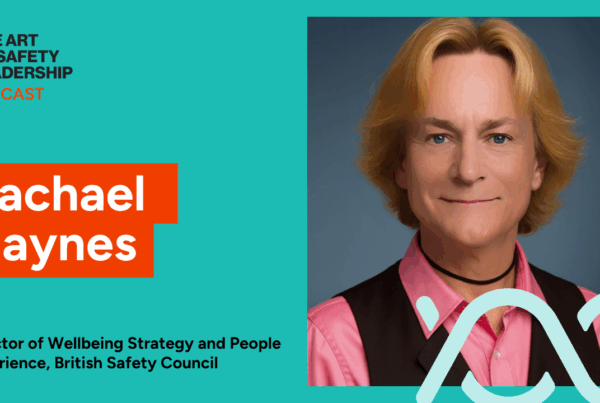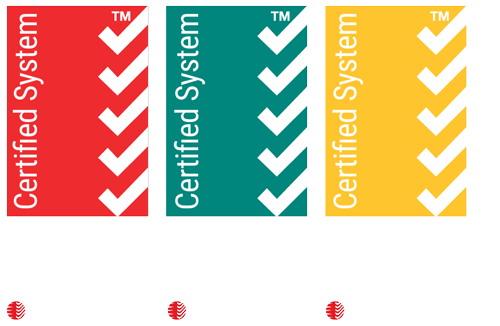“It’s not an injury — it’s capital leakage.” — Wade Needham
The New Conversation Boards Want to Hear
Every business leader understands the cost of capital, productivity, and growth. Yet many safety professionals still arrive at board tables speaking a completely different language — a technical dialect that measures injuries and incidents, not enterprise value.
As Wade Needham puts it, “LTIFR and TRIFR are labour-productivity metrics — not measures of safety.” It’s a wake-up call to the profession: if the numbers we present don’t translate to commercial reality, safety will remain confined to the compliance column instead of being recognised as a lever of business performance.
For Wade, a safety leader with deep experience across mining, construction, ESG, and agriculture, the transformation begins with reframing — from defensive compliance to offensive value creation.
Drawing on insights from Wade Needham, Director ESG and EHS at Natural Resources APAC in the Safe365 The Art of Safety Leadership Podcast, this article explores how safety leaders can position safety as a value creator..
🎧 Listen to the full conversation on the Safe365 “Art of Safety Leadership” podcast —
Episode: “The Future of Safety Teams.”
Safety Lost in Translation
Across sectors, safety functions are still measured by lag indicators. Boards get reports full of TRIFR charts and lost-time injury ratios, while the business itself is busy discussing margin pressures, capital allocation, and growth opportunities.
That gap is more than semantic — it’s structural. It determines whether safety is seen as a compliance burden or a business enabler.
Wade challenges the profession directly: “We sometimes need to let go of our language and understand theirs.”
Investors and executives are not confused by data. They know what risk looks like on a balance sheet. What they need is translation: a bridge between the financial signals they track and the human-capital performance those signals depend on.
The result of not bridging that gap is predictable. Safety remains defensive. Businesses manage to the threshold — not to the opportunity. As Nathan Hight summarises: “If your business sees safety as a compliance exercise, you’re defending the business, not building it.”
Reframing Safety as Human Capital Performance
Wade’s approach begins with a mindset shift: translate safety into commercial value terms.
Instead of reporting injuries, report capital leakage. Instead of chasing insurance discounts, describe working capital freed through risk reduction.
When you talk to boards in those terms, they immediately understand the upside.
“Workers’ compensation is dead money,” Wade says. “If you can get that out and put it into risk reduction, you start creating value.”
Speak to the right metrics
The most important safety metrics may sit outside the safety dashboard. Cash flow forecasts, capital expenditure patterns, and workforce churn are all leading indicators of risk exposure.
“If you read your budget,” Wade argues, “you know when people will be under load.”
Build capacity before load
Sustainable performance depends on balancing organisational capacity with business load. In tight markets or heavy project phases, that equilibrium shifts fast. Understanding that equation — and quantifying it — is what turns safety professionals into strategic partners.
Connect to growth
Investors don’t pay for maintenance; they pay for growth. As Wade and Nathan discuss, maintaining your return doesn’t lift your share price. Demonstrating how safety fuels growth does.
Safety becomes a driver of enterprise value when it protects human capital and enables performance at scale.
Embedding Value-Based Safety: Five Ways to Shift the Perception of Safety
1. Align Finance, People, and Safety Ecosystems
When Wade led a $20 million workers’ compensation portfolio, he refused to treat it as an administrative function.
“Some people run away from that,” he says. “But to me it was critically important — because the business was low-margin, and every dollar out the door mattered.”
He restructured the program around productivity and alignment — collaborating with QBE, Marsh, and Navigator Group to integrate claims, rehabilitation, and risk funding.
That alignment produced tangible returns: shorter claim durations, reduced premiums, and higher productivity. “Insurance is a very easy way to add straight to the bottom line when you understand it,” Wade notes.
The lesson: financial fluency creates influence. When safety leaders can quantify the return on human capital, they gain access to strategic conversations that were previously off limits.
2. Integrate ESG and Human Rights Frameworks
In Wade’s current world of sustainability and investment, the ESG lens is reshaping what counts as good governance.
He points to emerging global frameworks — the IFRS and the Task Force for Inequality and Social Financial Disclosure — that connect human rights, wellbeing, and capital allocation.
“Safety should look at itself through human rights. Wellbeing, fair wages and the ability to participate productively in society are now reputation and capital issues.”
This shift means that safety data no longer sits in isolation. It feeds directly into investor confidence, credit ratings, and access to growth capital.
Boards that manage human capital risk well can command higher valuation multiples, because resilience is measurable.
3. Use Business Data as Predictive Intelligence
Wade argues that most safety functions are sitting on a predictive goldmine without realising it.
Budgets, hiring forecasts, and capital constraints reveal more about risk than a survey ever could.
“If you read your budget,” he says, “you know when people will be under load. You don’t need to survey them.”
In practice, that means integrating operational and financial analytics — using forward-looking business data to anticipate psychosocial or workload stressors before they convert into harm.
It’s safety intelligence, grounded in commercial reality.
4. Invest in Frontline Leadership Capability
The biggest determinant of wellbeing in any business, Wade says, is the leader you speak to every day.
“Do they view you as a person or a resource?”
Investing in leadership capability delivers both safety and performance dividends. Managers who understand capacity, load, and human variability are the real risk managers in the business.
Frontline leadership is where strategy becomes culture. Without it, even the best frameworks fail.
5. Observe the Soft Signals of Culture
Wade’s governance lens extends to how culture is observed. He values the small, often-overlooked signals:
- How people eat lunch.
- How they leave at the end of a shift.
- Whether teams laugh, carpool, or simply look exhausted.
“You don’t win by focusing on safety — it’s productive safe work, not safe work.”
Observation, he says, must be authentic, not performative. Real leaders walk the floor, not to check boxes, but to feel the energy of the operation. Culture is lived experience, not a line in a policy.
From Compliance to Enterprise Value: The outcomes of reframing safety.
The outcomes from reframing safety as value creation reach far beyond the safety team.
> Financial Performance
Lower insurance premiums, predictable risk profiles, and improved working capital.
> Cultural Resilience
Higher engagement and lower churn through genuine load management and trust.
> Investor Confidence
Balanced defence–offence posture increases business resilience and valuation.
> Leadership Maturity
Great leaders remove load, create air cover, and enable others to perform.
> Human Sustainability
Safety reframed as wellbeing and contribution — not just prevention of harm.
Wade summarises it best: “Work is good for health. But only when we design it so people can perform productively and safely. That’s long-term sustainability.”
The New Mandate for Safety Leaders
Safety professionals who want influence must move beyond incident metrics. They must speak fluently in capital, capability, and culture.
Ask different questions:
- What is our human capital worth?
- Where are we leaking productivity?
- How can safety enable growth?
Wade’s challenge to the profession is clear: “If you want a seat at the table, you have to earn it in their language.”
When safety reframes itself as value creation, it ceases to be a compliance cost and becomes an investment multiplier — one that strengthens human performance, business resilience, and shareholder confidence in equal measure.
Conclusion — From Language to Leadership
Safety leadership has evolved. The language of compliance is no longer enough.
Boards and investors are listening for something different — a story about resilience, growth, and value creation through people.
Wade Needham’s career across civil construction, mining, and sustainability has taught him that the future belongs to those who can translate technical excellence into commercial impact.
For the next generation of safety leaders, the message is simple: learn the language of business — because that’s where your influence begins.






